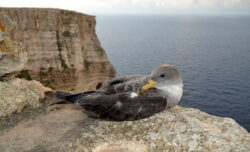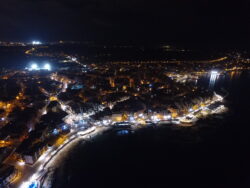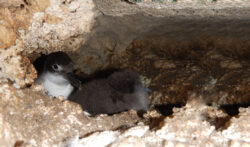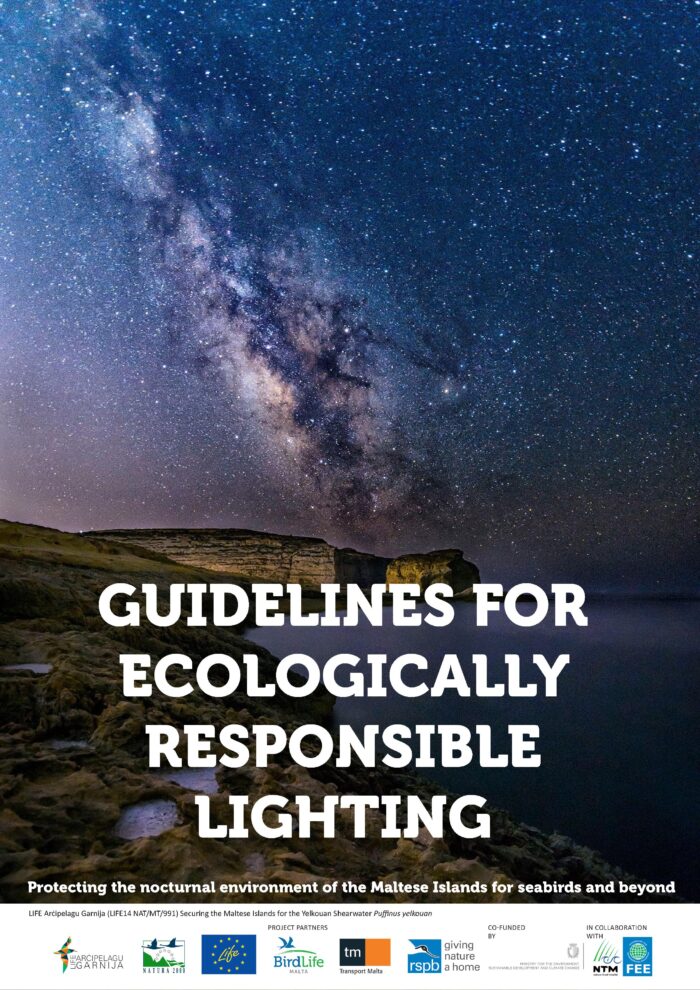With the aim of protecting Malta’s nocturnal environment for seabirds and beyond, BirdLife Malta’s LIFE Arċipelagu Garnija project – which this year comes to an end – has released a set of guidelines for ecologically responsible lighting in the Maltese Islands.
These guidelines for best practices in lighting are now being shared with the relevant stakeholders as part of the EU LIFE-funded project which has over the past five years worked to secure the Maltese Islands for the Yelkouan Shearwater (Garnija), a small seabird species that can only be found in the Central and Eastern Mediterranean region. The Maltese Islands are home to approximately 10% of the world population of this shearwater species, therefore their protection is important on the global scale, especially with the population declines Yelkouan Shearwaters have been facing over the last decades. The species is listed as ‘vulnerable’ by the International Union for Conservation of Nature (IUCN) on its Red List of Threatened Species.
Light pollution in Europe is increasing by 5-10% annually and 99% of the European population lives under light-polluted skies – a trend which is evident in the Maltese Islands as a result of poorly designed lighting schemes and an over-use of bright white LEDs. Light pollution is amongst the main threats faced by Yelkouan Shearwaters. These vulnerable seabirds are sensitive to light pollution and this was one of the main issues addressed by LIFE Arċipelagu Garnija. One of the objectives of the project was in fact to reduce light pollution around Yelkouan breeding colonies in Malta and Gozo.
BirdLife Malta’s LIFE Arċipelagu Garnija project releases guidelines for ecologically responsible lighting in the Maltese Islands
In spite of all the work carried out in this regard, it is a well-known fact that this problem can only be solved through a holistic approach. Through these newly-published guidelines for different stakeholders, we are taking a bold step in this direction. In addition to these guidelines, LIFE Arċipelagu Garnija recently also submitted to policy decision-makers a set of policy recommendations relating to the same topic.
The Guidelines for Ecologically Responsible Lighting, which are also available to the public here, aim to provide local councils, architects and developers with best-practice guidelines for the design and assessment of sustainable, cost-effective and seabird-friendly lighting. Their major objective is to promote the ecologically responsible use of outdoor lighting, with a primary focus on seabirds, preventing their disruption or displacement from their natural habitats or light-induced mortality. Key principles in light pollution mitigation are described in the document, which is also designed to complement current European Union (EU) standards and national legislation regarding outdoor lighting.

The guidelines are being published independently of the light pollution guidelines published by the Maltese Government earlier this year, to which we contributed with data-driven proposals. Whilst we welcomed the publication of these guidelines in June as the first concrete step towards mitigating the effects of light pollution on biodiversity, we are looking forward to providing more feedback in the public consultation process.
Whilst BirdLife Malta has played a leading role in researching the environmental impacts of artificial light at night, especially through our LIFE Arċipelagu Garnija project, we can only hope that the guidelines we have just issued together with the positive steps taken by the Government will finally result in the formation of a policy on light pollution for Malta which has now become a national urgency.
Read the Maltese version of the press release here.
Download the Guidelines for Ecologically Responsible Lighting published by BirdLife Malta’s LIFE Arċipelagu Garnija project by clicking on the front cover below.



